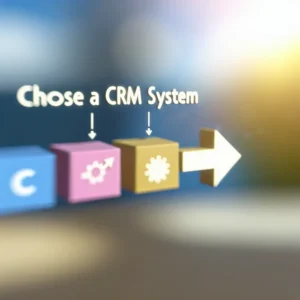In today’s competitive business landscape, aligning sales, marketing, and support teams is more crucial than ever. A harmonious collaboration among these departments can dramatically enhance the customer journey. As customers expect seamless experiences, businesses must ensure their teams work together effectively. Here, we delve into the significance of this alignment and explore strategies that foster collaboration and efficiency.
Understanding the nuances of customer interaction enables teams to address needs promptly. When sales, marketing, and support collaborate, they can create a unified strategy that promotes customer satisfaction and loyalty. This article will highlight essential insights and actionable strategies for achieving sales-marketing-support alignment, empowering your organization to thrive and adapt.
With the rapid advancements in technology and changing customer expectations, businesses must prioritize creating cohesive interactions among their teams. By adopting modern tools and effective collaboration methods, such as CRM for WhatsApp, you can better serve your customers and achieve long-term success.
Understanding Sales-Marketing-Support Alignment
Sales-marketing-support alignment is essential for fostering a coherent strategy that enhances the customer journey. In a business climate demanding agility, your teams must collaborate effectively to create seamless experiences. This alignment ensures that all customer interactions are optimized toward satisfaction and retention.
Effective team collaboration significantly influences overall business outcomes. By unifying goals, your departments can share insights that drive performance improvements. For example, Imagine the Marketing Solutions Corp, which developed targeted campaigns based on feedback from its sales reps. This led to a remarkable 25% increase in conversion rates.
A clear understanding of the customer journey is crucial for establishing alignment. Mapping out the customer’s path from awareness to purchase allows your teams to identify critical touchpoints. When sales and support teams know about marketing initiatives, they can better address customer needs promptly, enhancing satisfaction and fostering loyalty.
Incorporating tools like CRM for WhatsApp can greatly facilitate this alignment. The CRM provides an integrated platform for communication and data sharing, ensuring that your teams stay informed about customer interactions. This leads to quicker responses and a more personalized service, ultimately enhancing cohesion across departments.
Cultivating a culture of openness and feedback among your teams is vital for ongoing alignment. Regular strategy meetings and performance reviews create opportunities to discuss challenges and celebrate successes. By prioritizing alignment, your organization can drive significant growth and enhance its competitive edge.
Intelligent Communication Tech vs. Traditional Methods: A Practical Comparison
Modern communication tools like CRM for WhatsApp enable faster and more effective collaboration compared to traditional email methods. While emails can slow down essential communications, CRMs centralize customer data and streamline interactions. This shift reduces response times by over 30% for companies that embrace technology.
Roles and Responsibilities: A Day in the Life of a Sales Rep
A sales representative’s day revolves around effective alignment among sales, marketing, and support. They begin by reviewing daily objectives aligned with broader business goals, ensuring communication with the marketing team about current campaigns.
Take the case of Tech Innovations LLC, where sales reps engaged in pre-meeting planning sessions. These efforts made customer interactions reflect the latest marketing messages, solidifying the company’s unified presence in the market.
Throughout the day, sales reps gather insights from potential and existing clients, providing valuable feedback that helps refine marketing strategies. By forwarding this information to marketing and support, they contribute to continuous business alignment.
Moreover, effective collaboration between sales and support teams ensures swift resolutions to customer issues. This partnership maintains strong customer relationships and upholds commitments made during the sales process. It showcases how unity among departments fosters a seamless customer experience.
In summary, a sales rep’s responsibilities extend beyond selling. They are crucial links connecting sales, marketing, and support, optimizing every customer journey touchpoint. Tools like CRM for WhatsApp enhance these efforts, enabling better communication and improved customer engagement.
The Benefits of Strong Team Collaboration
Strong sales-marketing-support alignment creates a cohesive business environment. Collaborative teams provide seamless experiences throughout the customer journey, keeping departments informed about ongoing strategies.
For example, the Global Retail Group fostered communication flow among its departments. This collaboration led to marketing campaigns informed by customer support feedback and sales data guiding product development, resulting in a 40% increase in customer satisfaction.
Alignment cultivates a shared vision across teams, boosting employee engagement. When employees understand how their roles contribute to customer success, morale improves, directly impacting productivity.
Moreover, aligned teams streamline operations, reducing redundancy. By defining roles, organizations save time and resources, ensuring timely and relevant support, which enhances the overall customer experience.
Leveraging technology like CRM for WhatsApp can further boost team collaboration. This tool enables real-time communication and accessibility, empowering sales, marketing, and support to work together in addressing customer needs effectively.
Creating Business Alignment: Strategies for Leaders
Sales-marketing-support alignment is crucial for driving business success. Leaders must create cohesive interactions across these functions to enhance the customer journey and maximize resources.
Encouraging open communication is a fundamental strategy. Regular cross-departmental meetings facilitate discussions about goals and challenges. For instance, Inside Sales Inc. implemented weekly alignment meetings, effectively enhancing transparency and ensuring that teams share insights to refine strategies.
Establishing shared metrics across departments also enhances alignment. By aligning these KPIs with business objectives, leaders create a common understanding of success. Performance dashboards can visualize these metrics, making it easier for teams to track progress.
Training plays a vital role in aligning teams. Investment in joint training can foster respect for each other’s roles. Engaging team members in collaborative projects strengthens relationships and enhances understanding.
Creating a feedback loop within the customer journey is essential. Regularly gathering insights from customers allows teams to refine strategies collectively. This customer-centric approach not only enhances alignment but boosts overall customer experience.
Navigating the Customer Journey: Insights from Sales and Support
Sales-marketing-support alignment ensures consistent messaging throughout the customer journey. When teams collaborate well, customers feel supported at every stage.
Effective collaboration is crucial for identifying customer needs. Insights collected by sales reps can inform marketing strategies and support initiatives. For example, the Consumer Electronics Hub improved their support materials by relaying customer feedback into marketing campaigns, hence reducing inquiries by 15%.
Business alignment can transform workflows. Regular meetings help refine strategies and empower team members. The collaborative contributions from different departments lead to innovative solutions, creating cohesive messaging.
A well-coordinated customer journey builds long-term relationships. Customers perceive a unified front, leading to increased loyalty and referrals. This coordinated effort effectively converts leads into satisfied clients.
Tools like CRM for WhatsApp facilitate alignment by centralizing customer information. These tools ensure all team members access the same insights, which streamlines customer engagements and ultimately enhances collaboration.
Tools and Techniques for Effective Team Collaboration
Achieving sales-marketing-support alignment is essential for optimizing collaboration within teams. Business leaders should promote an environment where communication flows seamlessly across departments.
One effective method is implementing a centralized CRM for WhatsApp. This tool allows real-time access to customer data, significantly enhancing collaboration by keeping everyone informed on customer interactions.
Regular meetings can facilitate discussions about ongoing projects. This collaborative approach ensures that all teams are on the same page, leading to improved decisions on customer needs.
Using project management tools can also enhance collaboration. These platforms help track progress and set clear responsibilities. This transparency reduces misunderstandings, streamlining workflows effectively.
Training in collaboration techniques empowers team members. Workshops on communication strategies contribute to a culture of collaboration. As teams engage more effectively, they understand the significance of optimizing the customer journey.
Case Studies: Success Stories of Alignment in Action
The synergy between sales, marketing, and support teams is crucial for thriving businesses. Consider the case of Bright Electronics Group, which integrated its CRM for WhatsApp into its overall strategy. This led to maximal team collaboration and enhanced the customer journey.
Recognizing the importance of communication, Bright Electronics established weekly alignment meetings, allowing insights from sales to inform marketing campaigns. As a result, targeted messages led to a 35% increase in customer engagement.
Another success story comes from Peak Services Inc., which prioritized alignment through joint training initiatives. Team members learned about customer journey mapping, significantly improving communication strategies and positively impacting customer retention rates.
Additionally, they adopted a collaborative platform connecting all departments, leading to real-time campaign updates. Consequently, Peak Services saw a 30% increase in lead conversion rates over six months, demonstrating the effectiveness of teamwork.
Ultimately, these case studies highlight that sales-marketing-support alignment is not just theoretical; it is practically beneficial. By fostering collaboration, updating strategies, and leveraging technology like CRM for WhatsApp, businesses can create a seamless customer journey and drive growth.
Embracing a Holistic Approach for Growth
As businesses strive for sustainable growth, aligning sales, marketing, and support becomes pivotal. This alignment fosters a cohesive environment where teams work effectively together, enhancing the overall customer journey.
Breaking down silos is key to achieving this collaboration. By promoting open communication and shared goals, your organization ensures that every customer journey touchpoint is optimized, leading to better customer response to market demands.
A holistic approach facilitates integration across functions. Business leaders must prioritize creating feedback loops between teams. This iterative process ensures continuous improvement based on real-time customer feedback and market trends.
Incorporating tools like CRM for WhatsApp enhances alignment. By centralizing customer interactions, businesses can provide seamless experiences, aligning marketing messages with sales efforts and support communications.
Ultimately, recognizing that each department plays a crucial role in the customer experience is vital. By fostering sales-marketing-support alignment, your business can harness the strengths of each team, leading to higher conversion rates and greater satisfaction. Adopting this collaborative approach is essential for success in today’s competitive landscape.
For more information on enhancing team collaboration and customer engagement, explore our CRM for WhatsApp.









